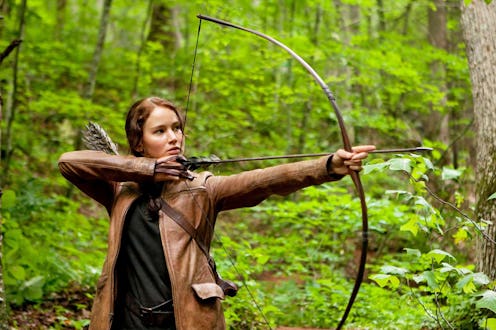
It's no surprise to hear that women are still underrepresented in film. But fortunately, The Geena Davis Institute on Gender in Media in conjunction with organizations like UN Women is trying to do something about it. The women's foundation's latest study Gender Bias Without Borders seeks to get women on screen and behind the camera. Their new study focuses on pointing out how often women are portrayed in film, and the way in which they are. After all, it's not enough to just cast a female role, it has to be a meaningful one. Davis says, "How do we encourage a lot more girls to pursue science, technology, and engineering careers? By casting droves of women in STEM, politics, law, and other professions today in movies." That's the theory behind the institute's goal of "if she can see it, she can be it."
But the organization doesn't just want to inspire American girls, which is why their Gender Bias Without Borders study covered popular films from 11 different nations. By illustrating the issues and successes of each of these countries, hopefully change can be made to the global film industry, not just to the United States. Ultimately we all win when more women are represented globally, because that encourages more to get into male-dominated fields and increases diversity in the industry.
The study found that the number one way to get women on screen was to hire a female director or screenwriter. Movies with a woman in charge hired on average seven percent more female roles. It's not a lot, but it's something and hopefully, these numbers will open more people's eyes. Some of the statistics the study found are horrifying. Like that 13-year-old characters are as equally sexualized as 39-year-old characters, or that even when a woman does land a role, she's five times more likely to have her appearance commented on than a male character is.
Comparing the countries also opened up a unique look at how the world measures up. Surprisingly, the leading countries in female representation were Korea and China. Half of Korean films feature female leads and Chinese films make up the world's most gender-balanced casts.
But while some countries were more forward thinking, it was disappointing to learn that the United States was not one of them. We ranked 8th in percentage of female characters with just 29.3 percent of our films containing female characters with speaking roles.
But it's no wonder they're not being represented on screen. In America, women only make up about 23 percent of film industry positions.
It may be 2014, but high powered positions are still overwhelmingly being given to male characters. In fact, globally, men played over 85 percent of all lawyers, judges, doctors, professors, and sports figures. That's a horrendous statistic because if women aren't able to see role models that they can aspire to be in these professions, it's harder for them to imagine themselves in that field.
Growing up as an aspiring writer I craved movies with female journalists to look up to, but unfortunately the few I did find were the stars of romantic comedies like Never Been Kissed or How to Lose a Guy in 10 Days. Both are good films, but the plot focused less on their career and more on the men they were dating.
I so admire the Geena Davis Institute's goal of "if she can see it, she can be it." I think we're a long way off from achieving that kind of equality in film, but fortunately studies like Gender Bias Without Borders provide those hard facts that are impossible to ignore. And maybe those numbers will wake the industry up in America and abroad so we can have a diverse global film industry that tells stories from different points of views. That's what can keep this industry fresh and exciting, and I hope those in charge wake up and see that, too.
Images: Lionsgate; erosum, introtofeminism/Tumblr; giphy